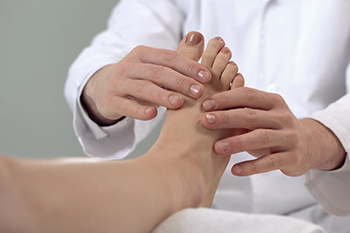
A corn is defined as a small, hardened area of skin that can form on different areas of the foot. A common place a corn can be found is on the outside of the pinky toe. Even though corns are small they can cause the gait or walking style to change. Corns may develop as a result of excess friction that is caused by wearing shoes that do not fit correctly. Some people may experience corns between the toes, and these are referred to as soft corns. When a corn forms on the bottom of the foot it is known as a seed corn. Seed corns may form from clogged sweat ducts, and it may be beneficial to wear socks that are made of breathable materials. If you have a corn on your foot, it is strongly suggested that you speak with a podiatrist who can remove it and offer you effective prevention methods.
If you have any concerns regarding your feet and ankles, contact the foot specialists of Certified Foot Care. Our doctors will treat your foot and ankle needs.
Corns: What Are They? and How Do You Get Rid of Them?
Corns can be described as areas of the skin that have thickened to the point of becoming painful or irritating. They are often layers and layers of the skin that have become dry and rough, and are normally smaller than calluses.
Ways to Prevent Corns
There are many ways to get rid of painful corns such as wearing:
- Well-fitting socks
- Comfortable shoes that are not tight around your foot
- Shoes that offer support
Treating Corns
Treatment of corns involves removing the dead skin that has built up in the specific area of the foot. Consult with Our doctors to determine the best treatment option for your case of corns.
If you have any questions please feel free to contact our offices located in Larchmont and Brooklyn, NY . We offer the newest diagnostic and treatment technologies for all your foot and ankle needs.
